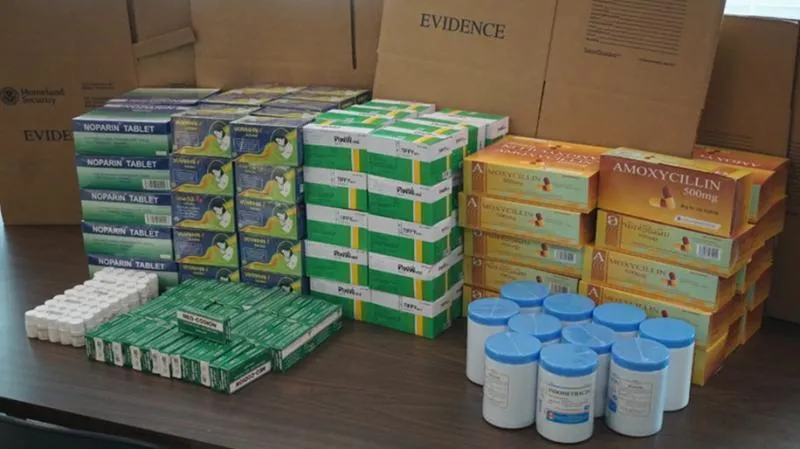MINNEAPOLIS, Minn. — U.S. Customs and Border Protection (CBP) officers in Minneapolis recently seized a shipment containing more than 40,000 prescription pills worth more than $12,000.

medication.
On January 11, CBP officers inspected a shipment arriving from Laos. The parcel, manifested as Tiffy Dey, was inspected to determine if the goods were admissible in accordance with CBP regulations. CBP officers found 15,000 Amoxicillin pills, 10,000 Indomethacin tablets, 5,000 Norpramin Paracetamol and Verakhai-i Paracetamol Tablets, 4,000 Tiffy Dey Paracetamol Tablets, 1,020 Neo Codeine pills and 500 Dexamethasone Acetate pills; a total of 40,520 pills.
This shipment contained commercial quantities of over-the-counter medications with no FDA notification and one schedule II medication which had no prescription or FDA notification. The U.S. Food and Drug Administration prohibits the importation, by mail or in person, of fraudulent prescription and nonprescription drugs and medical devices. The shipment was addressed to a residence in Brooklyn Park.
Medications purchased from online sources can be improperly produced and not meet pharmacological specifications and safeguards that ensure the protection of human health. Prescription medications manufactured by non-regulated foreign companies often contain dangerous contaminants or ineffective compounds, and though their packaging and labeling can be similar to genuine products, inconsistent ingredients and sub-par quality controls can cause harm to consumers.
“Protecting and safeguarding consumers from inferior products is vital component of CBP’s border security mission,” said Augustine Moore, Area Port Director-Minneapolis. “This is a testament to the commitment made by our officers to keep dangerous goods out of the country.”
Counterfeit and/or fake medications are substandard and can cause significant harm. These products are then packaged and labeled to look like the real thing.
CBP's border security mission is led at ports of entry by CBP officers from the Office of Field Operations. Please visit CBP Ports of Entry to learn more about how CBP’s Office of Field Operations secures our nation’s borders. Learn more about CBP at www.CBP.gov.

